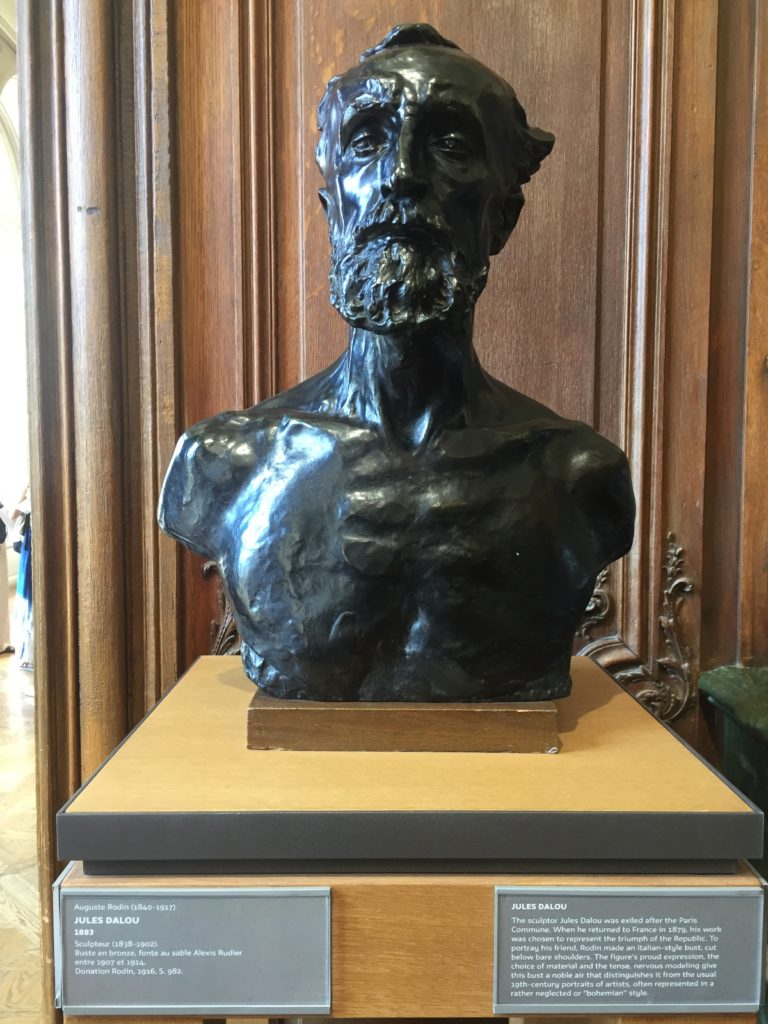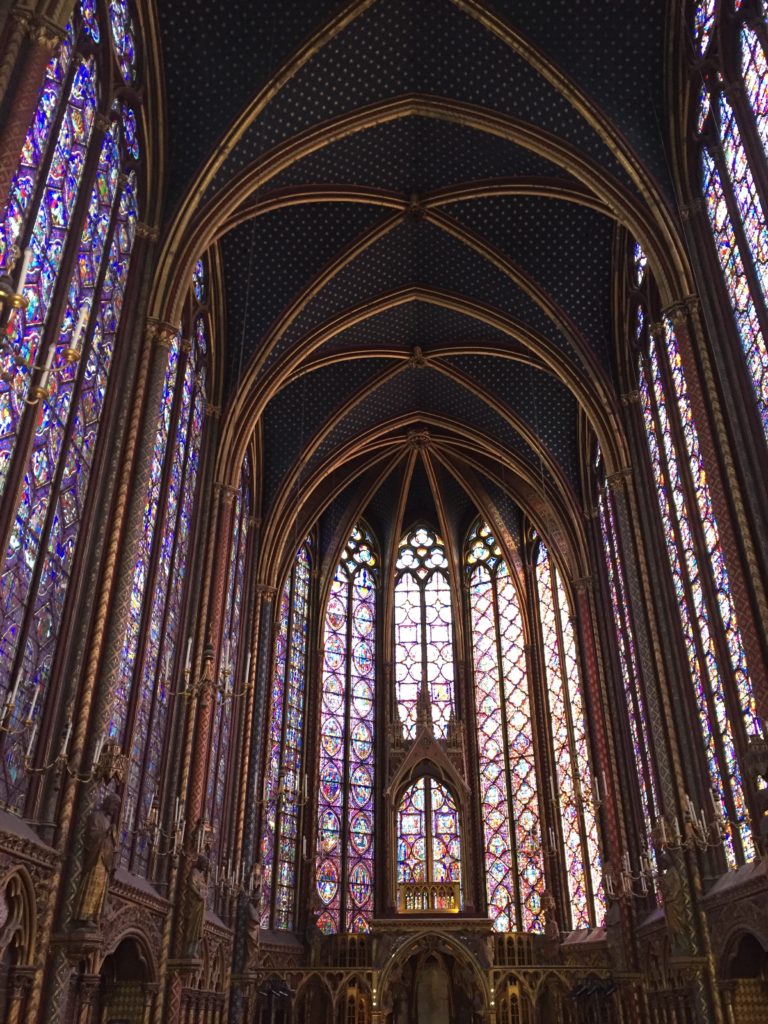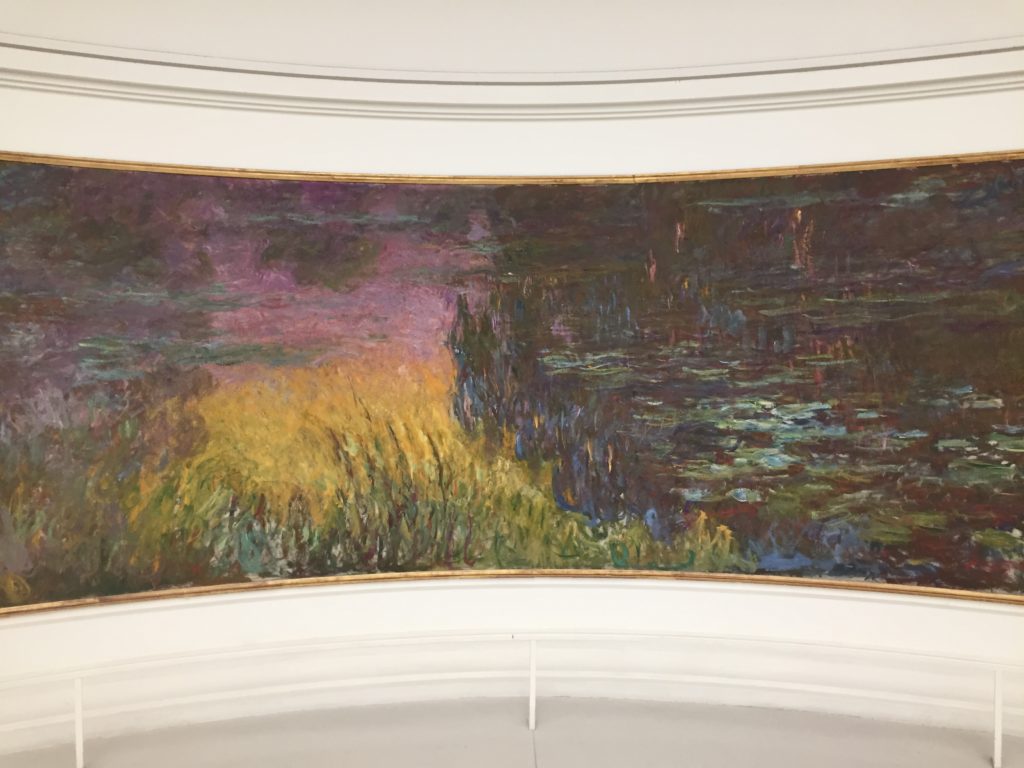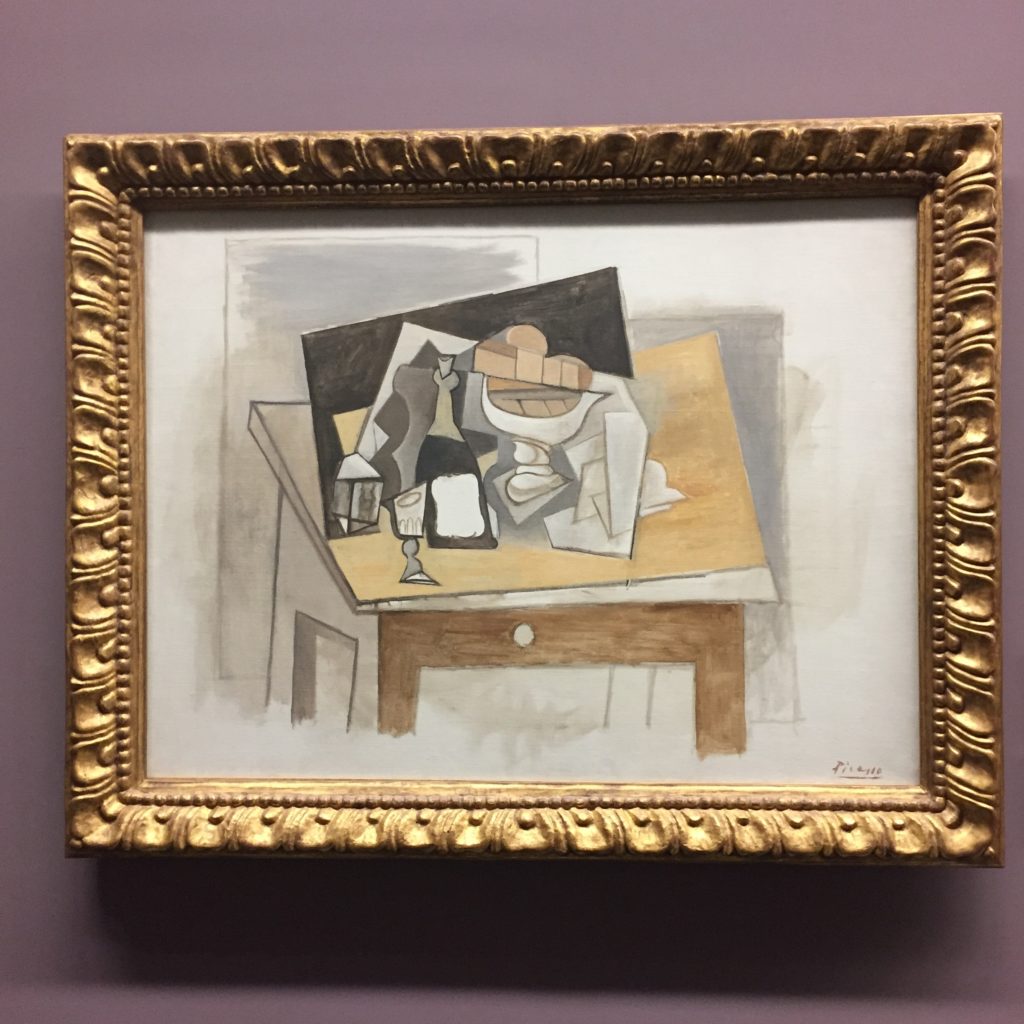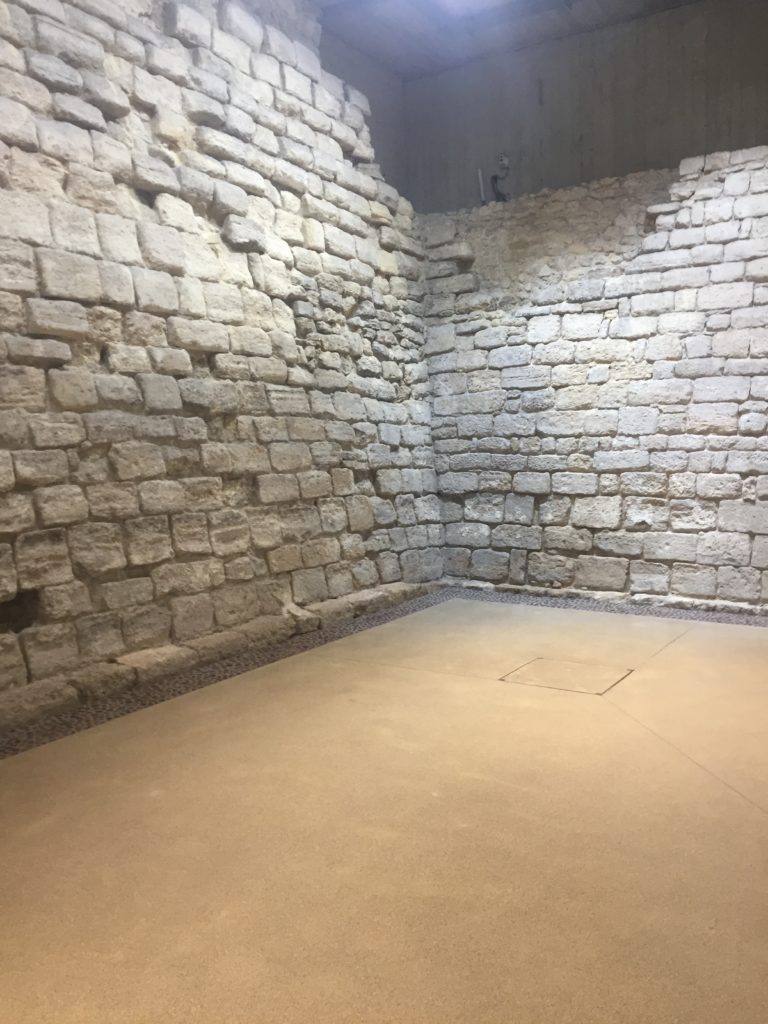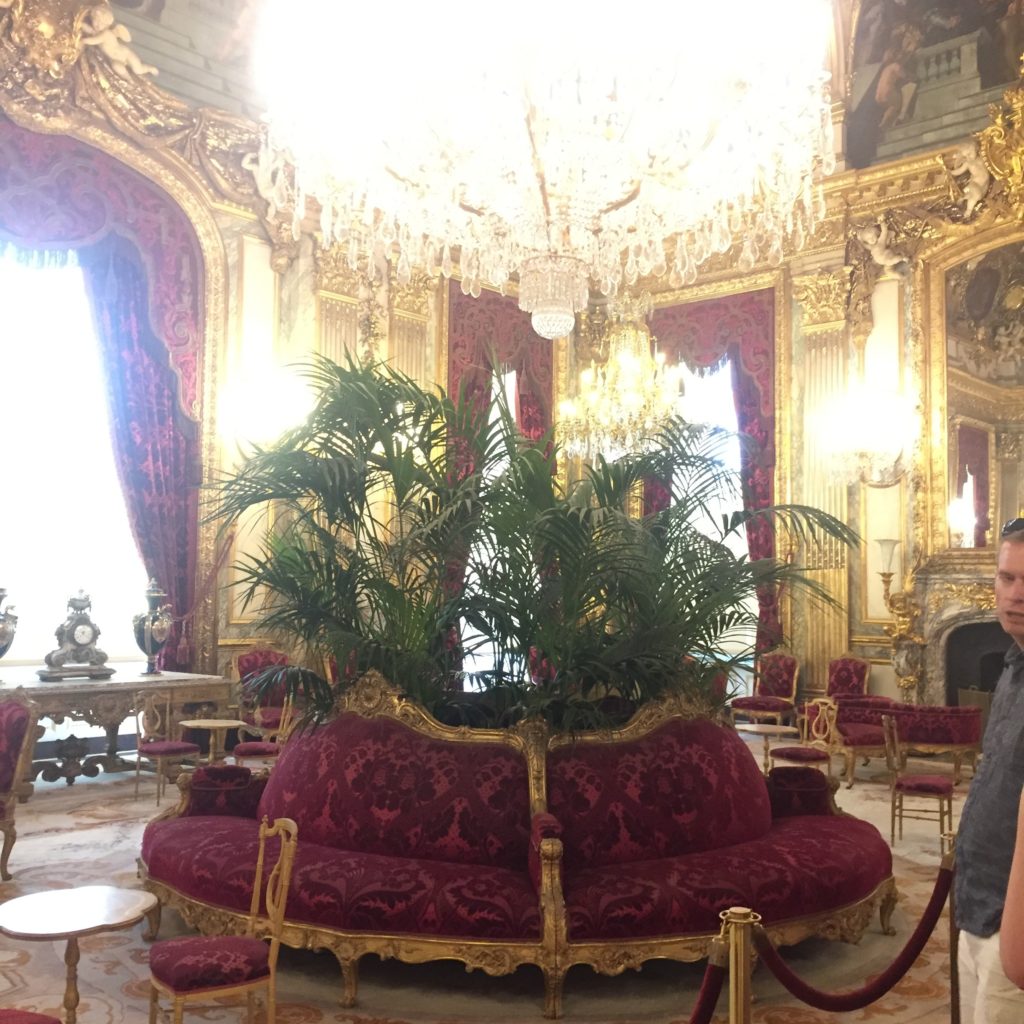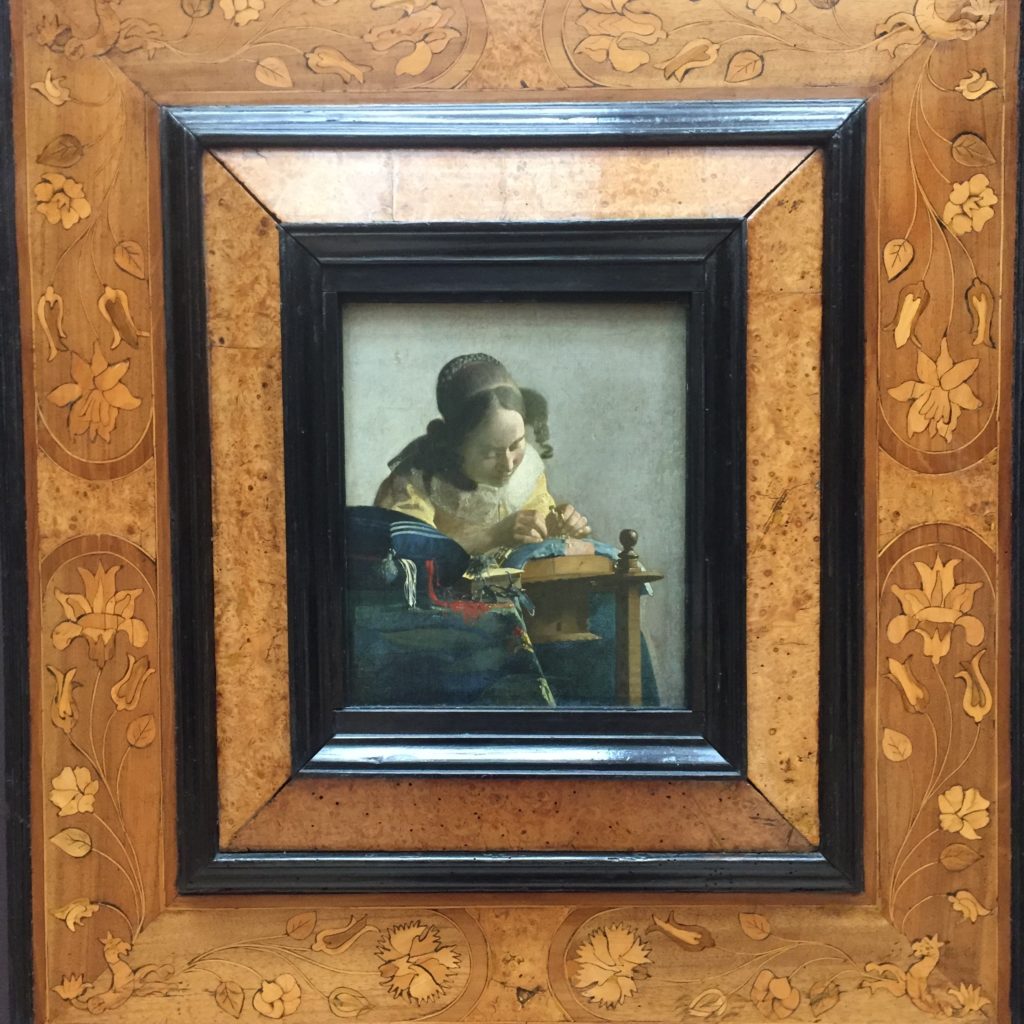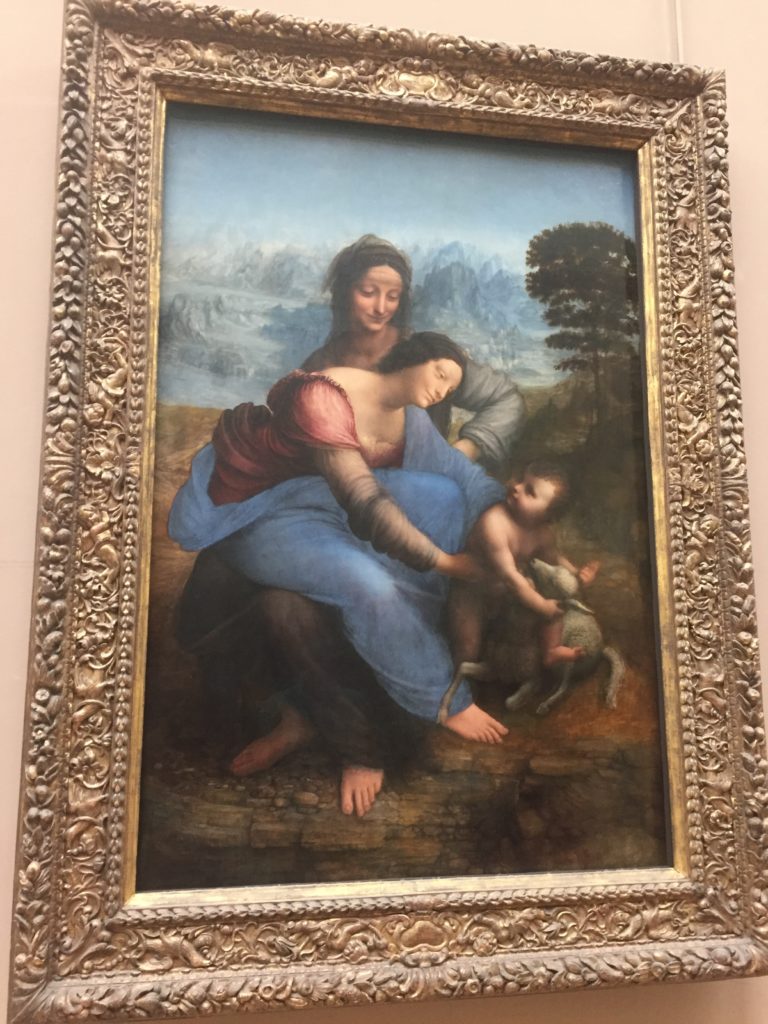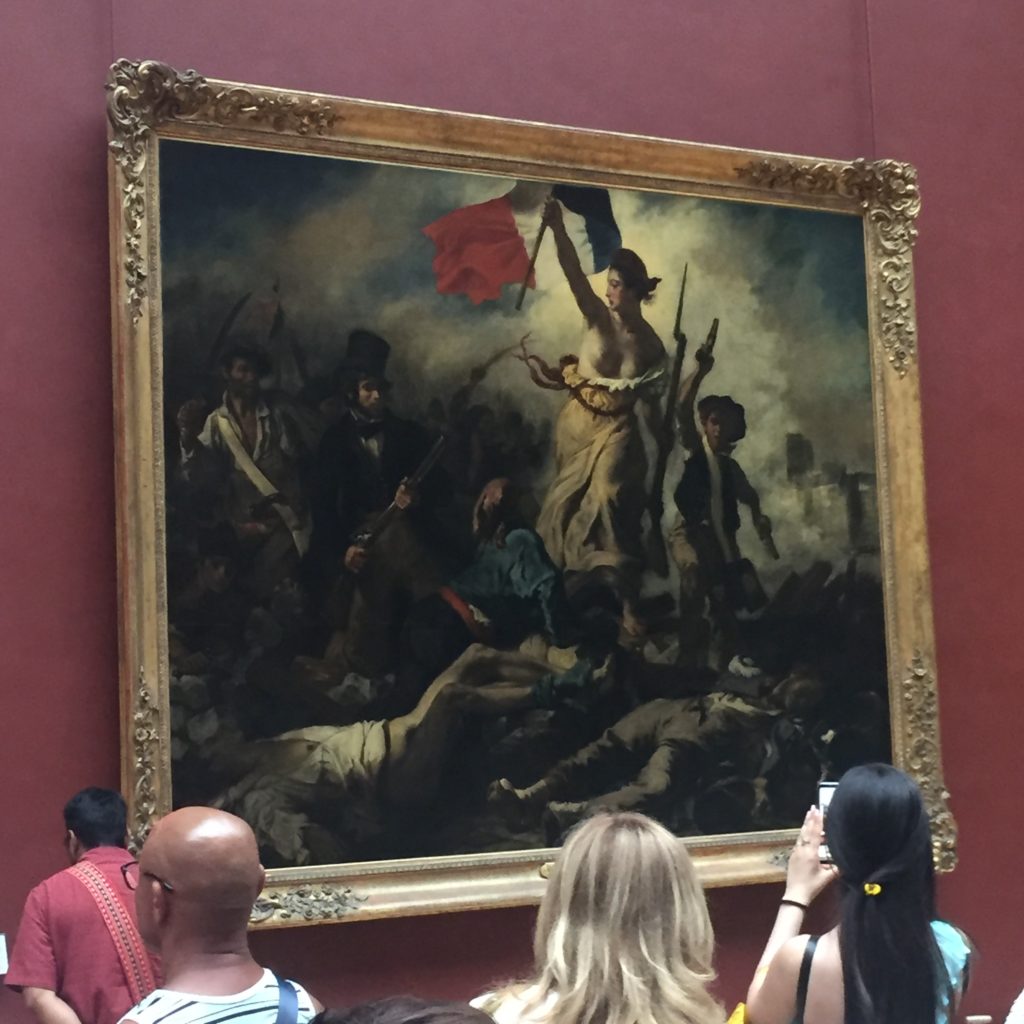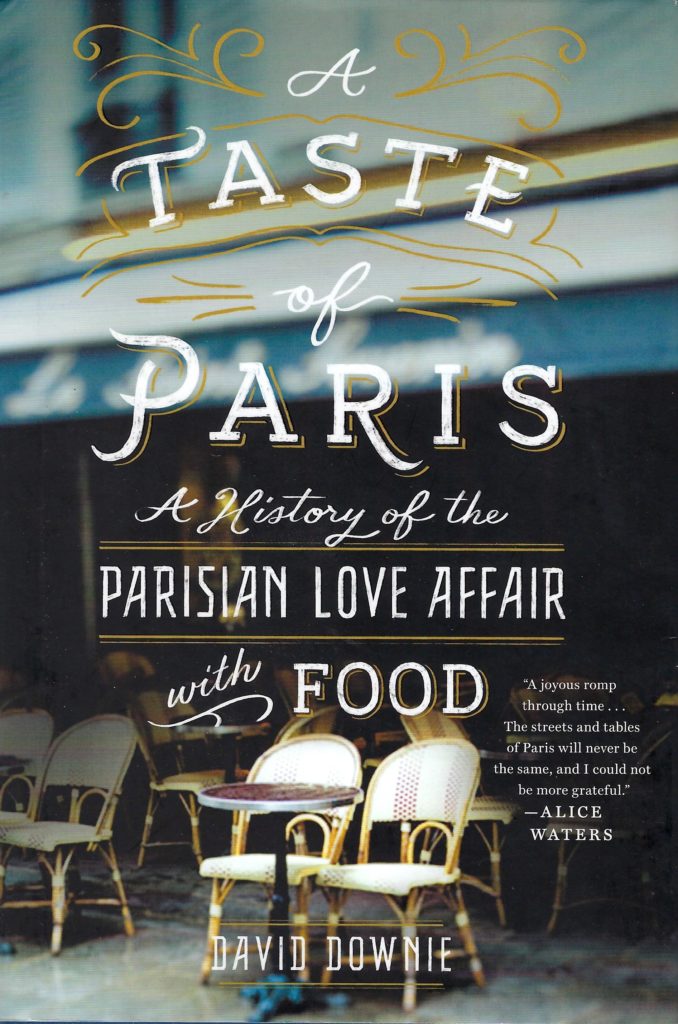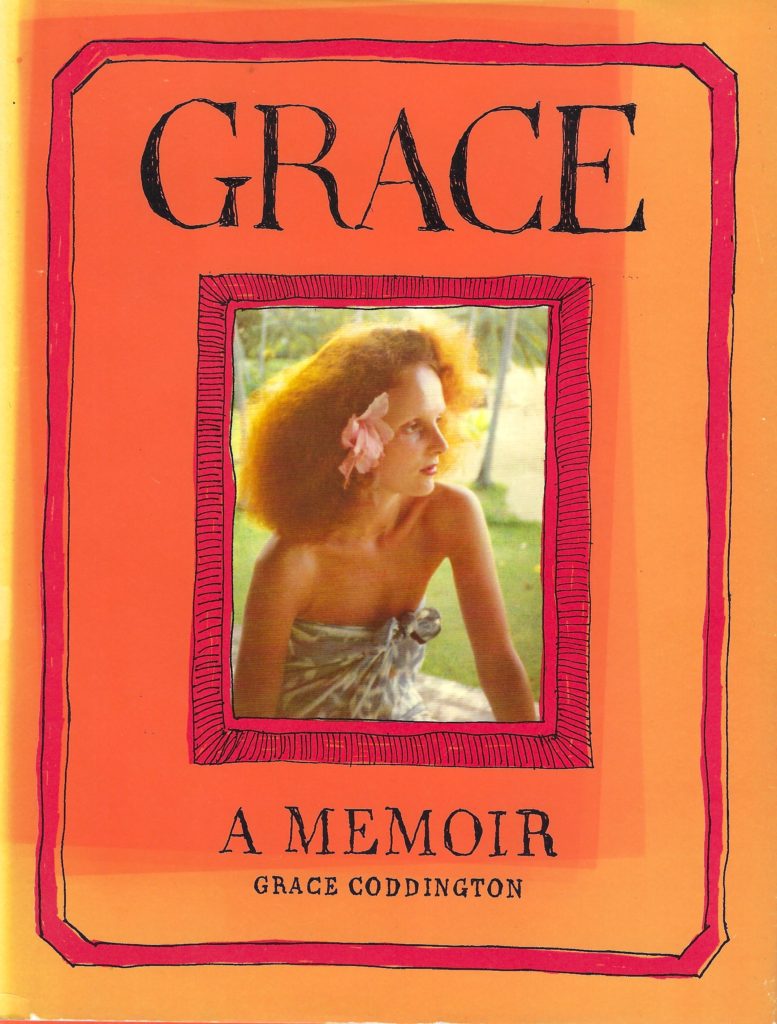
However insane and over-the-top you think the Chateau Versailles is, double it at least.

It’s lovely, don’t get me wrong. But the whole complex includes not one, not two, but three palaces, an opera house, gardens large enough to have bike rental services, and Marie Antoinette’s fake village.

This is not my most successful photo. I was trying to capture the yellow room I was standing in, the green one that followed, the blue one after that, and the red one in the distance, all with the same texture on the wallpaper. It was an interesting effect in person (there was clearly not a hallway here).

The Hall of Mirrors was very fancy and very crowded.

There is just so much gold leaf everywhere. Dial it down a notch or two. Yeesh.

The gardens are both gorgeous and ginormous. You can rent boats to take out on the Grand Bassin (the rectangle of water in the distance).

This is the Grand Trianon, one of the two smaller palaces at Versailles.

And this is the Petit Trianon, the other of the two smaller palaces at Versailles. I tend to think that if you have to build smaller palaces for people to escape the spectacle of the main one, you may have gone too big.
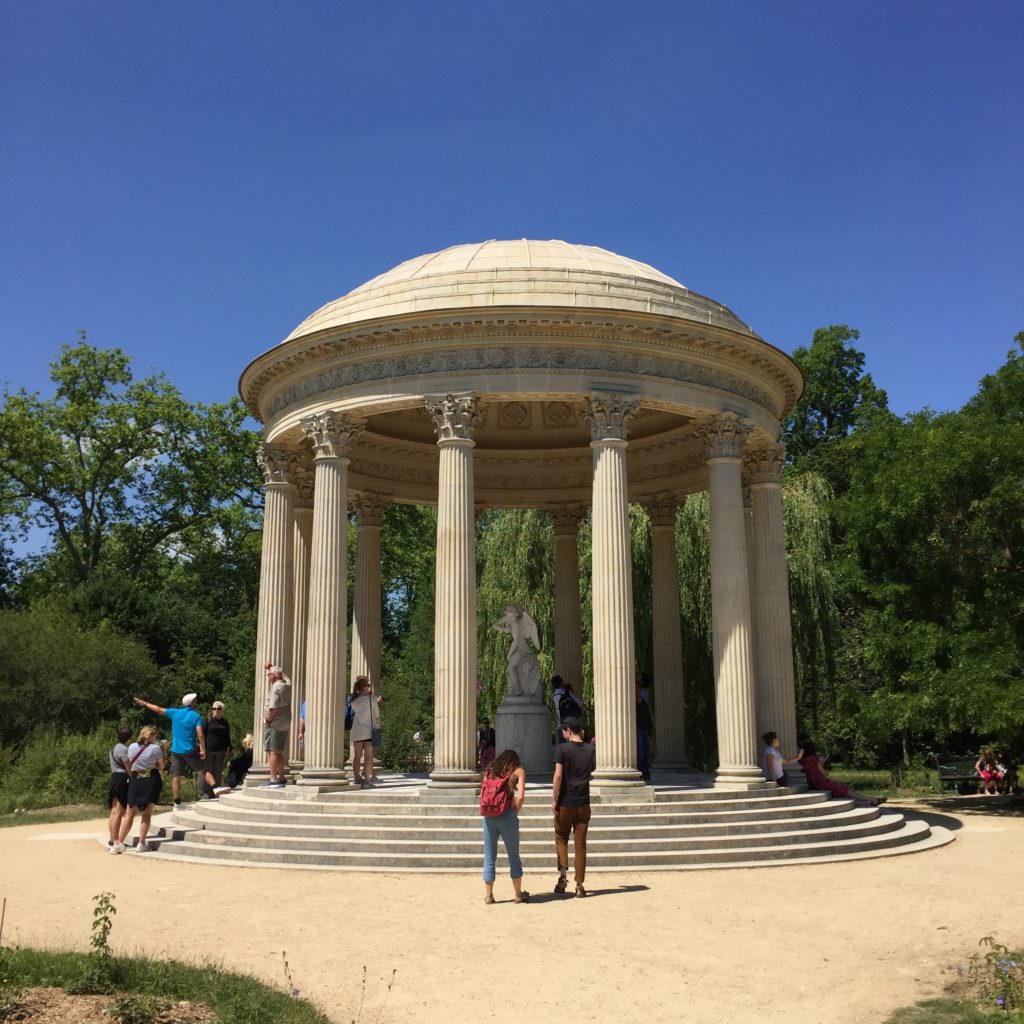
Can I interest you in a fake Greek temple to Artemis?

I find Marie Antoinette’s village kind of hilarious. I said it looked like Disneyland while my husband marveled at its existence in the first place.

I understand that she craved not being in the spotlight the whole time – she did not seem like the kind of person who enjoyed the fame that came with being the Queen of France. Not to mention that when the French Revolution started, she was basically blamed for everything when almost none of it was her fault.
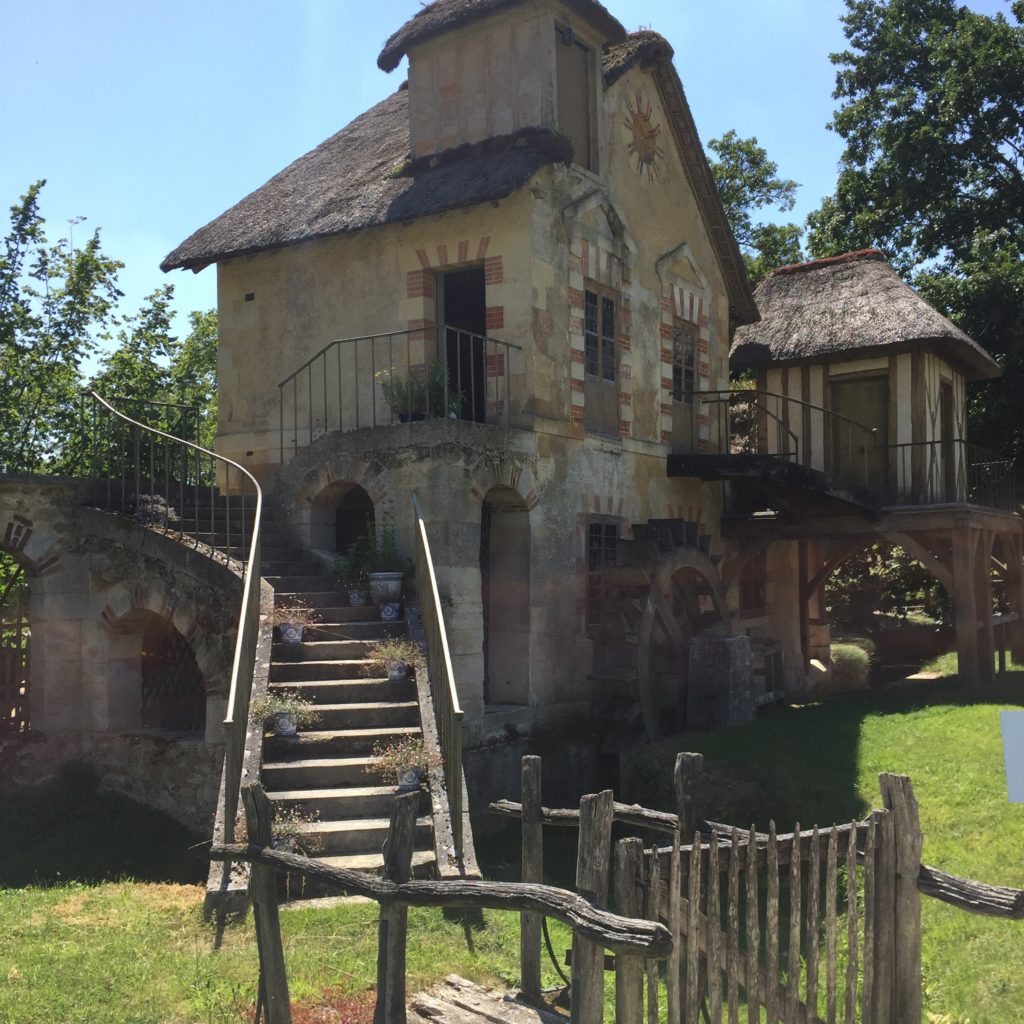
But to build an entire village and then hire people to live there, just so you have a place to go escape…. Well, it seems very 1% of her, you know? (She literally didn’t know any different and she was not the type of person who could go live amongst the people… I have some empathy for her terrible situation, but she was also pretty tone deaf.)

(Beyond the fountain is the City of Versailles.) Anyway, Versailles is a day trip out of Paris and if you’re going to Paris you should go once. But I don’t know that you need to go more than that.



